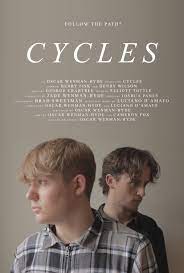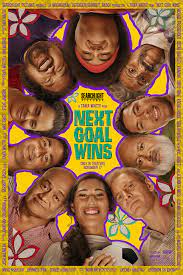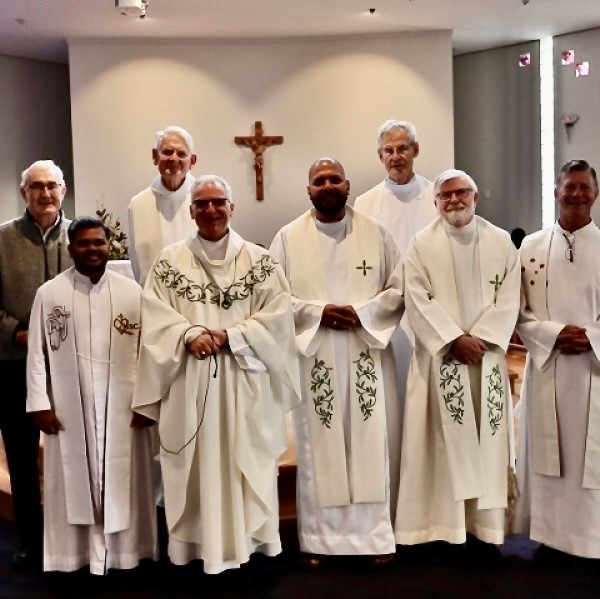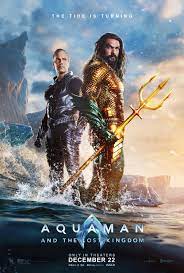Peter MALONE
Cycles

CYCLES
UK, 2022, 67 minutes, Colour.
Henry Fisk, Henry Wilson.
Directed by Oscar Wenman-Hyde.
This is a small feature film, just over an hour’s running time, made on a budget of under £1000, the work of the writer-director, based on his own experiences.
This is a film of dialogue, and would have been very effective performed on stage. As it is, the film opens in the street, the facade of university accommodation, two brothers entering, going upstairs into the room allotted to the younger brother for his studies. The rest of the action takes place in the room – with a variation of momentarily moving into the corridor. At the end, the facade appears, a singer busking outside, and the two brothers leaving.
This is a first film by the writer-director, and the two actors. It was filmed in Bristol.
The theme is important as dramatised by the interactions between the two brothers.
We learn that their father has walked out on the family, they are dependent on their mother who does not appear (except her voice during a phone call) but is a strong presence throughout the interchanges. The brothers are not named, simply the Older and the Younger. The age difference is five years apart.
The key to the issue is that the younger brother has been accepted into a University and has come to the accommodation. He is the personification of self-doubt. By contrast, his older brother has been to university, has married, has a career, and has been asked by their mother to make sure that the younger brother is settled and to help him unpack. The younger brother resents this, the older brother acting with a sense of responsibility.
There are changes of moods throughout the film, especially with the younger brother, reacting badly against his dominating and interfering mother, resentments of the father leaving, happy memories of when he was bonding with the older brother, making it amateur films together, happiness. However, the older brother meets someone, falls in love, the younger brother tagging along to outings, a growing resentment. Then there is a question of favouritism, mother-love, ambitions and dreams, control…
Many audiences will suspect that the younger brother is gay. This is not explicitly said but, at one stage, he receives a text from a friend who announced that he was gay and the younger brother not able to deal with this. The friend, alienated for several months, now sends an encouraging message for his moving to university and adds kisses, a topic for discussion by the older brother and what this means.
So, an hour of mood changes, ups and downs, audiences finding the younger brother alienating, then perhaps more sympathy for him, acknowledging the responsibility of the older brother, but his discovering of his inadequacies in the past – and the domination of their mother.
However, there is a final embrace and, one hopes, hopes for the future, the younger brother in his studies, to be an actor, and communication with the older brother.
There is a song played at the end, a busker in the streets, and, interestingly, the older brother putting a coin in his basket as he passes.
Delta, The

THE DELTA
US, 1996, 85 minutes, Colour.
Shayne Gray, Tang Chan.
Directed by Ira Sachs.
This is the first feature film by writer-director, Ira Sachs. He had made some short films but this was the beginning of his career, for the next 25 years, at least, in filmmaking. His hometown was Memphis, Tennessee, and he uses this location for The Delta, the town and its various neighbourhoods, the vastly flowing river.
Ira Sachs is noted for his exploration in all his films of relationships, with a special focus on exploring homosexual relationships. This is very much the case in this film, focusing initially on an 18-year-old young man, from a comfortable family, with a girlfriend and local friends, gathering together, especially fur drink and drugs. We also see him cruising, sexual encounters with anonymous men. Some tension with his girlfriend, he goes to an adult movie arcade, encountering one of the men he has previously met, who states that he was here hoping that the young man would turn up.
The young man is played by Shayne Gray, his only feature film. For those interested in the background of the filmmaking as well as Shayne Gray himself and his subsequent career, he has a very long blog entry under his own name in the IMDb, informative about the making of the film, Ira Sachs, and his own personal life. The other central character is Vietnamese, Vietnamese mother, black American father who had left the family, John. He is gay, cruises, has a local backup community. This is the only film for the actor, Tang Chan.
The film focuses on an evening that the two spend together on the boat owned by the young man’s father, buying fireworks and setting them off illegally, pursued by the police, talking, swimming together, the hopes of John, and an ultimate rejection by the young man who returns to his family.
The rest of the film focuses on John, his friends and family, ordinary life, going into bars, picking up a large man who is flattered, happy to spend the night with John Dan who, to the surprise of the audience, strangles his client. A dramatic conclusion, insight into the character of John, sexuality, emotional needs, sense of betrayal, vengeance.
While the film made some impact in its time, some awards for its 16mm grainy photography, it can now be seen as a prelude to the more significant films made by Ira Sachs.
Revolt of the Zombies

REVOLT OF THE ZOMBIES
US, 1936, 64 minutes, Black and white.
Dean Jagger, Roy Darcy, Robert Noland, Dorothy Stone, Carl Stockdale.
Directed by Victor Halperin.
A historical curio, available on YouTube.
Victor Halperin had made the film, White Zombie, in 1932, with Bela Lugosi. He intended this film is a follow-up, with Lugosi. There were various difficulties, and using the title with zombie, with Lugosi’s presence. Finally, Lugosi’s eyes from the first film are used extensively and atmospherically, superimposed on the action, for the exercise of sinister power.
The 1930s had so many small-budget variations on horror themes. This one seems more eccentric than usual in retrospect.
The opening premise was that there was a group of Cambodian soldiers fighting on the Austrian front for France in World War I. Accompanying them was a priest with a statue for worship and with a painted document, corresponding to an architectural frieze. The premise is that whoever had this power could control others, zombie-like behaviour.
For those expecting zombie sequences (memories of George A.Romero), there is nothing really like this at all.
The priest is murdered while worshipping by a sinister Asian -looking general, Roy Darcy.
The war sequences also introduced to friends, the archaeologist, Armand, an early role for ultimate Oscar-winner, Dean Jagger, earnest in his trying to explain to the generals about the power of the priest. And there is his friend, Robert Noland, urging him to be more forthright and to “ride roughshod” over others.
After the war, there is an expedition to Cambodia, to Angkor Wat, action studio bound but with some authentic backdrops filmed in Cambodia. There is a lot of expected action, exploration on the site, some mysterious accidents, the sinister general reappearing.
And, as with this kind of film the 30s, there are the Americans walking into other cultures with supreme confidence. And, as expected, there is a romance, the archaeologist falling in love with the general’s daughter and she accepting him but provoking his friend. While they become engaged, there is an accident sequence where she takes refuge in the friend in the archaeologist gives her her freedom.
The archaeologist returns to Angkor Wat because the expedition, after the accidents, had returned to Phnom Penh. By accident, in his investigations, he falls down into a subterranean religious maze, confronting the general, killing him, getting the power – and, perhaps to the audience’s surprise, he becomes all controlling, riding roughshod, controlling his servant, controlling the troops, even controlling his friend, the generals, and the wise archaeologist who had given him advice.
How to end all this – true love! The archaeologist continues to declare his love, promising to give up everything for her, but with the servants and troops regaining their power, they all turn on him and destroy him.
An interesting opportunity to look at some of the horror themes of the 1930s moviemaking.
Next Goal Wins

NEXT GOAL WINS
U/US, 2023, 104 minutes, Colour.
Michael Fassbender, Oscar Kightley, Kaimana, David Fane, Rachel House, Beulah Koale,Taika Waititi, Will Arnett, Rhys Darby, Luke Hemsworth, Angus Sampson.
Directed by Taika Waititi.
It’s true. Decades ago, in an international football match (“soccer” to many) Australia played American Samoa and won, 31-0. This has become part of football folklore and was the subject of a documentary also called Goal Wins.
So, what if writer-director, Taika Waititi, with his wry sense of humour (his rock character in Thor, vampires living in Wellington, What We Do in the Shadows) decided to write a movie treatment? He did, and here it is. And he filmed it on the island of Oahu, Hawaii.
There is love of football codes in the Pacific Islands as well as in New Zealand and Australia, more rugby is than soccer. The American Samoans, saddened by their loss to Australia, still want to field a team. So, there is a lot of comedy potential in showing the ragtag team, their inept play, the great desire to score and International match just one goal.
In the meantime, this film also becomes a story of Tom Rongen, an easily irascible coach who is fired and reluctantly takes the option of coaching American Samoa. He is played by Michael Fassbender with quite some intensity.
There have been a number of complaints about the film, that it is a step down for the director, especially after his big-time Marvel movies with Thor. But, we remember Boy and Hunt for the Will to people, and he has always had that enjoyably low-key humour, turn of phrase, the touch of the sly which generally tickles an audience sense of humour and keeps them smiling if not laughing out loud. And, this is what happens here, all throughout the film, enjoyable dialogue touches, like the scene with a Samoan police officer chasing a speeding car (well, the speed limit is 30 mph) and warning him to drive carefully with the comment, “Heaven’s full!”. (waitit was very successful with this kind of screenwriting with JoJo Rabbit, Oscar-winning, and his clever sendup of Hitler.)
Another funny sequence is the football boards firing of the coach and predicting that he will go through Elizabeth Kubler Ross’s five stages – and he does!
Lots of some on characters, players, sometimes successful, often not, all kinds of training and exercises (pauses for prayer, never on Sunday), the standout character is being Oscar Kightley more as the President of the football club, also press photographer, restaurant owner, everybody trying to make some money to keep the club going. He is a fine counterbalance to the coach, and engaging screen presence. And there is Kaimana as the champion transgender player, Jaiyah,challenging the coach, succeeding in the end.
There is an enjoyable cameo appearances from Rhys Darby, Rachel House, Elisabeth Moss, and obnoxious Will Arnett and loud-mouth talkers, Luke Hemsworth and Angus Sampson.
So, this is a modest feel-good movie, and there is no law against enjoying the obvious!
As with so many films, the final credits show the real Thomas Rongen,, coach and sports commentator, and the actual Jaiyah, coach and FIFA official.
PS. Please sit through the rather long final credits, listening to the music if you don’t read them fully, because who should turn up right at the end but Waititi himself as the Samoan priest from the beginning of the film and a funny joke so that we leave the cinema laughing.
- A true story? American Samoa, football, ambitions? Realistic look? Humorous look?
- The American Samoa setting, filmed in Hawaii, small, township, meeting places, the mountains and tracks? The football sequences in Samoa, the stadium? Atmosphere?
- The opening, the replay of the Australia versus American Samoa match, 31-0? The response of the people, hopes, continuing with the team, the members, practices, comic presentation of errors? Tavita, the president, his son playing, the pep talks, the hopes, searching for a coach? The local coach, agreeable, submissive, sacked? Yet still helpful?
- Tom Rongen and his situation, the board, his explanations, hired, the panel, the joke with Elizabeth Kubler Ross’s five stages illustrated, Tom’s wife present, the smug Chairman, the option to go to American Samoa? His taking it, the flight, arrival, the TV press, Tavita as the cameraman, his accommodation, basic, his resentments?
- The characters in American Samoa, Tavita being genial, his enterprising wife and her interventions, disguised as an oracle on the beach, tin cans? The younger members? The large goalkeeper? The police official, his strong kick? Jaiyah and the transition situation, identifying legally for the match as male, the transition? Football skills? The former goalkeeper, his losses, being recruited? The other players returning? But the player run over by the truck?
- The meetings with the coach, exercises, slack, improving, stopping for prayer, no practice on Sundays? The religious atmosphere? The introduction to the situation by the Samoan priest, and the director’s comic dialogue and style?
- The short time span, Tom Rongen, his drinking, at the store, phone calls, his wife, their separation, the revelation of the death of his daughter and its effect on him? His wife and her relationship with the chair of the board? The practice sessions, giving up, illustrating moves, the interactions with Jaiyah, his being punched out, skills?
- The bond between Tom and Jaya, animosity initially, stories, respect, friendship?
- Tom eventually telling his story, his angers, his daughter, the bond, playing football, the drive, the crash and death?
- The great desire to kick one goal? The meetings, prayer? Going to Samoa, the flight, touch of jetlag after 35 minutes! Settling in, the encounter with the Tongan team, their aggressive tactics?
- The buildup to the match, hopeless, Tom and the previous illustrations of his angry behaviour, repeating it, leaving? Tavita and the conversation, prevailing? Change of heart, Jaiyah as captain, the strategy, the player tripping the opposition, the penalty, the goal? Tavita and his collapse?
- The device of Tavita in hospital with his wife, his son coming to explain what happened, the flashbacks, the tactics, and the second goal?
- The interlude with the Australians remembering the big defeat of the past, loud-mouths, friendly?
- Happy ending, the achievement, Tom and his decision, with his wife, the members of the board?
- Footage of the actual Tom Rongen, his career, commentator? Of Jaiyah, the transition, continuing to play, coach, FIFA official?
- Important not to miss the final sequence after the credits, the Minister, Taika Waititi, the final joke, not walking on water!
Chris Chaplin calls in from Rome
Chris Chaplin calls in from Rome

We welcomed Chris this week, his staying at Blackburn, invited to the Kew community for a meal. He came with Brian, Khoi and Trieu (who took the photos).
A slice of senior living – Wednesday is Paul Castley’s day for cooking.

Wishing Chris well as he begins his second term on the General Council.

MSC in Canberra, 2024
MSC in Canberra, 2024

A memory of the celebration of the memory of the celebration of the 50th anniversary of St John’s parish Kippax with several priests who have served there: back, Frank Dineen, Michael Fallon, John Bosman; front: Michael Nithin, Chris McPhee, Kimi Vunivesilevu, Gerard McCormick, Mark Hanns.

MSC have been in Canberra since 1960 when we opened the Monastery on the Federal Highway as our Philosophy student house, closed at the end of 1973 when all students were at Croydon (the Monastery open for almost ten years after this as archive house). Then Daramalan opened in 1962. Kippax parish in the early 1970s.
Now 2024
Priest-in-Residence, Charnwood – Fr Gerard McCormick MSC

Gerard is a music man
Priests at Kippax – Fr Tru Nguyen,

Tru shows a pastoral bent
Fr Chung Minh Tran

Koala meets Chung
The Archdiocese of Canberra and Goulburn has asked that the bringing together of the neighbouring parishes of Charnwood

and Kippax

proceed and has initiated the process for this to occur. Fr Tru Nguyen MSC, Fr Chung Minh Tran MSC and Fr Gerard McCormick MSC have been appointed priests in solidum, that is, with each having the faculties of a parish priest, and Fr Tru Nguyen, already appointed Parish Priest of Kippax, has been appointed Moderator of the two parishes.
Tru will continue in the chaplaincy at Daramalan. The photo below is a sign of what he can look forward to when he finishes at the College, as Kimi has after six years.

However, Kimi is not lost to Canberra – his spirit will pervade from St Mary’s Towers as he is the Community Leader, including Canberra.
2024, Year of the Laity of the Chevalier Family An alert.
2024, Year of the Laity of the Chevalier Family

An alert
It is just three weeks until the assembly of Laity in the Philippines. There will be 124 participants from member countries with 25 walk-in participants from the Philippines attending. The participants come from 24 countries with seven attending for the first time.
The logo is an abstract representation of the theme: ‘One in Heart in Caring for Our Common Home.
The first element is the Hands. The hands in the centre symbolize the unity of the Laity of the Chevalier Family. Facing downward, it gives us an image of a dove that is engulfed in flames. The colour denotes the colour of an inflamed heart, reflecting the virtues of love, passion, and care.
Aquaman and the Lost Kingdom

AQUAMAN AND THE LOST KINGDOM
US, 2023, 124 minutes, Colour.
Jason Momoa, Patrick Wilson, Yahya Abdul-Marteen, Amber Heard, Nicole Kidman, Randall Park, Temuera Morrison, Dolph Lundgren, voices of: Martin Short, Pilou Asbaek, John Rhys Davies, Vincent Regan.
Directed by James Wan.
2023 has been a strange year for Superheroes and their movies, for both Marvel and DC. Decline, one might surmise, unexciting with The Marvels, over-exciting with Aquaman, too much, and Shazam 2!!!.
For Aquaman fans, there will be more than enough as long as they keep track of the plot lines and the character links. For those unfamiliar, hopes - a futile effort.
Actually, the film starts humorously, Arthur Curry/Aquaman, Jason Momoa, inflating his account of an attack on vicious pirates (and the battle visualised), told to amuse his little baby son. Then he reminiscences with dad, Temuera Morrison and his wife, also Queen of Atlantis, Amber Heard.
Then two hours of action, action, fights, the weirdest of creatures, enormous monsters, the return of vengeful domination-hungry villain, David Kane/Black Manta, Yahya Abdul-Marteen, exploitation of global warming, then after liberating his rival brother King Orm, Patrick Wilson, urged on by their mother, Nicole Kidman, and the Atlantis Council.
Final dramatic crisis with the abduction of the baby, quite some help from the sympathetic scientist, Dr Shin, from the previous film, Randall Park. But Dolph Lundgren is also there in his most wooden non-emotional dialogue as the King (worthy of a Golden Raspberry nomination).
But, there is a joke about Orm tasting cockroaches and finding them delicious and, during the final credits, is eating, finally, a hamburger grabbing a Cockroach for added savour. And that is after Arthur/Aquaman addresses the United Nations on global harmony.
Where to now for DC?
- The status of DC comics, the variety of film versions, the Justice League? The place of Aquaman?
- The continuity with the original film, Atlantis, political disputes and prisoners, Arthur Curry as Aquaman thinking of Atlantis, Mera his wife, the political struggles? The links between the characters?
- A film of special effects, CGI, monsters and creatures, enormous fights, the musical score? Born to be Wild and other tracks?
- The opening, the pirates, Arthur exaggerating the story, telling his baby, love for the baby, with his father, their reminiscing, chat and a beer together? After going to Atlantis, sitting at council meetings, the Council itself, visually, his being bored?
- The introduction of Black Manta, the struggle in the previous film, the death of his father, blaming Aquaman, wanting revenge? His group of scientists, the submarine, the news about the substance for fuel, stealing it, processing it? His reliance on Dr Shin? The plan for revenge, the power of the golden trident, Dr Shini and his wanting out, the terrifying jungle, his remaining?
- Arthur and his search for Orm, prison, freeing him, Orm emaciated, the pursuits and the dangers, the fights, the bickering amongst themselves, Orm getting to the water, reviving, the fights on the shore, the escape? The arguing with each other? The reunion with their mother, her support of them? King Nereus and his hostility towards Orm?
- The abduction baby, the bloodline and Black Manta needing the blood?
- The range of travels, through the sea, the ice, the contrast with the jungles? The episode of eating the cockroach?
- The buildup to the final fights, Dr Shin trying to save the baby, Black Manta and his staff, the attack? The fight to the death, Black Mountain never surrendering?
- The global situation, global warming, the news flashes, the visuals of disasters around the world? The finale, Arthur representing Atlantis at the United Nations, his speech, global unity?
- The happy ending, order restored, and Orm eating his hamburger – and the cockroach?
Wish

WISH
US, 2023, 95 minutes, Colour.
Voices of: Ariana DeBose, Chris Pine, Alan Tudyk, Angelique Cabral, Victor Garber, Natasha Rothwell, Jennifer Kumiyama, Evan Peters, Ramy Youssef.
Directed by Chris Buck, Fawn Veersunthorn.
A Disney animation feature to celebrate 100 years of Disney. Sadly, critics were harsh on the film as were blogs and comments from the public.
The intention was to continue with the line of Disney heroines, thinking Snow White, Sleeping Beauty, Cinderella and, of course, the heritage from Frozen. (And, during the final credits, there are sketched characters from all the celebrated Disney films.)
The film has a strong voice cast, led by Chris Pine as the malicious King, Magnifico, Ariana DeBose, Oscar winner for West Side Story, as Asha, the 17-year-old who wants to audition to be an apprentice to the King. She is attractive. She is feisty. She is certainly in the tradition – but not exactly a Princess until the end. She is active, she has cared for everyone, she confronts the King, wishes upon a star who materialises, leads the strategy against the King.
The film starts with storybook visuals on pages and narrative – and ends with a happy ever after with the book.
In the meantime, there are a number of supporting characters including a three weeks old goat with a fine accent, there is Asha’s hundred-year-old grandfather and her mother, a number of friends and servants as well as the population of this island community, which had welcomed everyone from everywhere, in the Mediterranean.
With her audition, Asha discovers the malice of Magnifico, starting benign, resorting to sorcery, becoming ever more powerful, and even more avaricious of greater power. His main song lyric is “I get what I want”. But, ultimately Asha, with the help of the disillusioned queen, finds a strategy with the help of the star she has twist upon and appears to overcome Magnifico, but not without great dangers to herself.
The young audience will be taken with the story, the eccentric and funny characters, the heroine, and the evil King. An older audience might spend some time thinking that it is all an allegory about fascist dictators, initially charming, subjects loyal, becoming more and more evil and possessive, exercising power ruthlessly, wanting complete domination.
So, in comparison with other Disney films, it is rather slight, but quietly enjoyable in its limited way.
PS. It was not only this reviewer thinking of the allegory of fascism but a shrewd blogger takes it all further…Fascinating cultural study on capitalism
TopTenJesus200025 November 2023
So what I believe Disney was doing with Wish was to tell kids not to spend their time wishing away their lives by consuming Disney products and movies. When you place your hopes and dreams into the hands of a power greater than you, such as corporate Disney, you become a slave to what they want serving only to make them more powerful and you weaker.
It's a bizarrely subversive hit on themselves
- The celebration of the Disney centenary? A succession of animation features? Princesses and of enterprising and lively heroines?
- The title, the theme of ordinary people’s wishes, their being collected, the king promising to fulfil them but then collecting them, refusing to grant them, but the heroine freeing the wishes and their being absorbed, and creative fulfilment?
- The visual style, the characters, traditional Disney, the heroine, the king and queen, the Palace, the island in the Mediterranean, the forests? The voice cast? And the singing?
- The insertion of the songs, Asha, with her hundred-year-old grandfather, her mother, the memories, singing with them, singing with all the servants, Magnifico and his song, the Queen joining in, the happy songs?
- The opening, the book, the fairytale, the voice-over, the King, Magnifico, his rule, becoming a sorcerer, more and more powerful, auditioning Asha, the apprentices, his being defied, not granting wishes, Asha and the star, his reaction, relying on his wife, her turning against him, Asha and the stars seeing the grandfather’s wish? Magnifico, more and more angry, to destroy Asha, his public appearances and acclaim?
- Asha, aged 17, with the range of servants, serious, comic, the foolish, the grumpy, tired, the sewing friend? Magnifico using the tired friend as a decoy, fulfilling his wishes? His betraying his friends? The confrontation in the woods?
- The plan, the group of servants, trying to open the roof, letting the wishes go free? Asha going into the woods, the horse, the star, the magic wand and its exercise? Magnifico in pursuit, with Simon in his place? Staying in the Palace, gathering the people, getting all the wishes, capturing them?
- The combined efforts of everyone to overcome the King, the little star, confronting Asha, his being confined to his staff – and the Queen relegating him to the dungeon?
- The comic touches with the goat, the star not speaking but twinkling, the range of supporting characters and voices?
- An allegory of fascist leaders and their love for power? And the need for rebellion – and, in this case, a female-led rebellion?
Home, Sweet Homicide

HOME, SWEET HOMICIDE
US, 1946, 89 minutes, Black-and-white.
Peggy Ann Garner, Randolph Scott, Lynn Bari, Dean Stockwell, Connie Marshall, James Gleason, Anabel Shaw, Barbara Whiting, Shepherd Strudwick.
Directed by Lloyd Bacon.
Home, Sweet Homicide is a light entertainment from 1946, post-war cheerfulness, a look at family, and much in the vein of the television family programs to come, and a murder mystery.
The film has an interesting cast, child actor Peggy Ann Garner in the lead, an early role for Dean Stockwell showing that he was very comfortable in front of the camera, Lynn Bari as the mother, James Gleason is an irascible cop, Shepherd Strudwick as a suspect, and, very surprising, Randolph Scott, not in the saddle or anything like his Western persona, but a quietly gentlemanly police officer.
Mother writes crime novels and the three children, the journalist father now dead, are very well-informed about detective investigations, clues, suspects… When the lady next door is shot dead, and they have accurate information as regards the time of the shots, they decide that their mother should investigate which will be a big boost to her for sales of her novels when she solves the crime. But, mother is busy about her own novel.
The three children love one another but there is continuing bickering, especially young Dean Stockwell resenting being called baby! The older daughter, Dinah, Peggy Ann Garner, has a local friend Joe-ell who is in on some of the action.
Mother’s detective character in her novels is Bill Smith. The chief police officer investigating, the quietly urbane Randolph Scott, happens to be Bill Smith. Signal for the happy ending!
So, there is comedy, tension, the children invading the house next door to find important documents, which they do, which reveal that the murdered woman was blackmailing a lot of her clients, concealing some information from the police, being interrogated, being shrewd in evading answers.
However, the main suspect from audience point of view turns out, of course, to be the killer with some dramatic turns and dangers for the children.
Very slight but a pleasant reminder of 20th Century Fox and its family-oriented entertainments of the mid 1940s.


